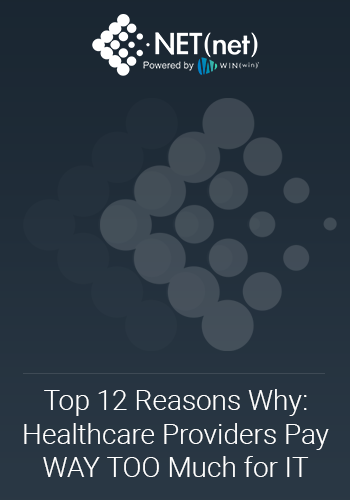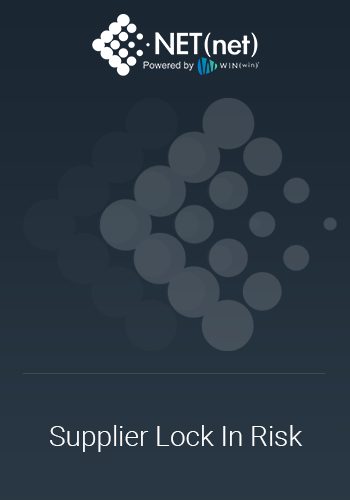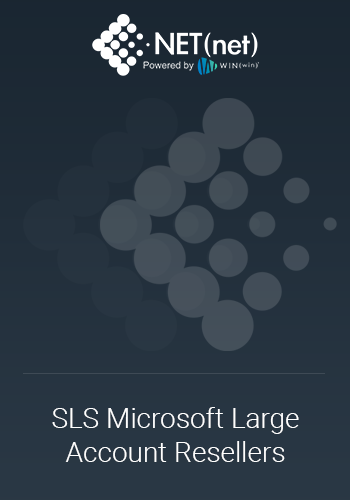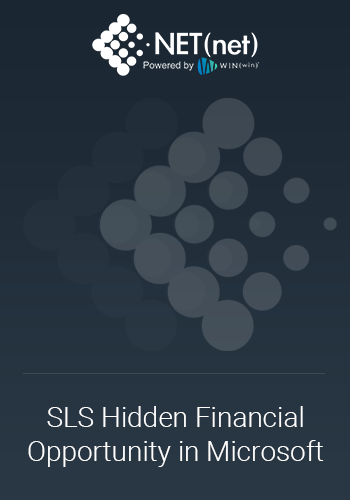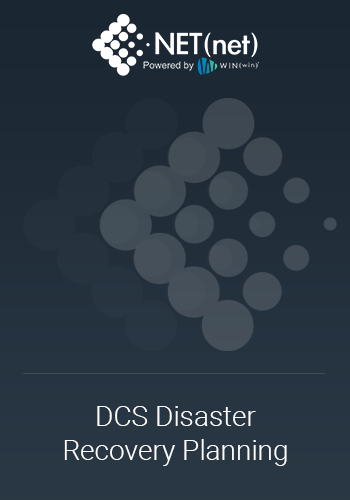Salesforce.com has long been a leader in customer relationship management (CRM) Software-as-a-Service (SaaS), but whispers of discontent have been growing amongst its large enterprise customers in recent years. Concerns center around a perceived slowdown in innovation, hefty and seemingly ever-increasing price tags, and a recent wave of key executive departures. This raises a crucial question: is Salesforce still a worthwhile investment for large enterprises in 2024?
The Challenges:
Certainly, Salesforce offers a comprehensive feature set, strong ecosystem, and enterprise scalability. However, they have a number of challenges, and these are the Top 5 we hear from their customers:
- Innovation Stagnation: Customers feel the pace of innovation is lagging behind competitors, with specific concerns about acquired companies like Slack and Tableau not being fully integrated.
- Rising Costs: Salesforce's pricing model is often perceived as complex and wildly expensive at scale, with concerns about continual price increases not reflected in added value.
- Transactional Relationship: Common among customer complaints related to Salesforce is the company's transactional (and often counter-intelligent) view of its customers, with arbitrary growth targets that, if not achieved, trigger seemingly inexplicable and punitive price increases that add the insult of diminished inclusive value to the injury of execution failures.
- Executive Exodus: Key departures from both Salesforce and acquired companies raise questions about leadership stability and future direction.
- Here are 6 key executives from Salesforce and its acquired entities who have departed in recent years:
- Bret Taylor: co-President & COO, left Jan 31 2023 (14-month tenure)
- Keith Block: co-CEO, left in 2020 (18-month tenure)
- Stewart Butterfield: CEO of Slack, left in 2021
- Greg Schott: CEO of MuleSoft, left in 2020
- Steve Cakebread: CEO of Tableau, left in 2019
- Gavin Patterson: Chief Strategy Officer, left in 2023
- Uncertainty from Activist Investor Influence: Recent investment by activist shareholders has sparked customer concerns about potential misalignment between maximizing shareholder value and prioritizing customer needs. While increased scrutiny can lead to positive changes, some worry that focusing solely on short-term financial gains might come at the expense of long-term customer satisfaction and sustainable growth. Customers might question if decisions driven by investors primarily focused on stock price will compromise features, product quality, or customer service in the long run. Transparency and clear communication from Salesforce regarding how they are balancing both sets of interests will be crucial in addressing these concerns.
Salesforce's Response:
Salesforce acknowledges these concerns and says it has taken steps to address them, not limited to, but including:
- Increased Investment in R&D: Committing more resources to research and development, focusing on AI and automation.
- Improved Integration: Aiming for seamless integration of acquired companies, particularly Slack and Tableau.
- Pricing Transparency: Efforts to offer clearer pricing models and explore other subscription options (code for less discounting).
- Leadership Focus: Emphasizing customer success and re-aligning leadership around this goal.
Client Countermeasures:
While Salesforce responds, client organizations can take proactive steps to optimize their investments:
Top 5 Countermeasures:
1 - Conduct a Comprehensive Review: Analyze your Salesforce usage, identify underutilized features, and seek subscription access license optimization opportunities.2 - Explore Alternative Solutions: Evaluate competitors and niche players for specific needs, comparing functionality and cost-effectiveness.
Pro Tip: According to Mike Welsh, Chief Value Officer at NET(net), “Salesforce catches customers with mysticism and keeps them with tyranny, and if your Salesforce.com deployment is not growing at an annual rate of 20%+, Salesforce will continue to raise rates, exacerbating the already highest cost CRM in the industry. We can show you some good ways to cost optimize your Salesforce.com deployment and build negotiation vectors to recapture lost value. Your willingness to seriously evaluate competitive alternatives will act as a force multiplier to any negotiation strategy and may help you stymie Salesforce.com’s willingness to continue to increase your costs in exchange for little to no value”.
3 - Negotiate with Confidence: Gather data on industry benchmarks and leverage it to negotiate fairer pricing and improved terms and conditions in both the commercial arrangement and the contractual agreement.
4 - Consider Alternative Implementations: Explore low-code/no-code options or open-source alternatives for specific functionalities.
Pro Tip: The following are prominent low-code / no-code, and open-source alternatives to Salesforce for specific functionalities:
Low-code/No-code Alternatives:
- Functionality: Customer Relationship Management (CRM)
- Options: Zoho CRM, HubSpot CRM, Pipedrive, monday.com CRM, Freshworks CRM
- Functionality: Sales Automation
- Options: HubSpot Sales, Outreach, Close.io, Pipedrive, PandaDoc
- Functionality: Marketing Automation
- Options: Hubspot Marketing, Mailchimp, Klaviyo, ActiveCampaign, Pardot
- Functionality: Service Management
- Options: Zendesk, Freshdesk, monday.com Work OS, Zoho Desk, Helpshift
- Functionality: Project Management
- Options: Asana, monday.com Work OS, ClickUp, Trello, Wrike
Open-Source Alternatives:
- Functionality: CRM
- Options: Odoo, SuiteCRM, vTiger, CiviCRM
- Functionality: Sales Automation
- Options: Mautic, OroCRM, OpenGooDS
- Functionality: Marketing Automation
- Options: Mautic, LeadsBridge, Sendy
- Functionality: Service Management
- Options: GLPI, OsTicket, OTRS, MantisBT
- Functionality: Project Management
- Options: OpenProject, OpenGantt, Taiga.io, Redmine
Top 5 Pro-Tips for Negotiations:
- Seek External Expertise: Consider engaging consultants that specialize in negotiating with suppliers like Salesforce such as NET(net).
- Build a Strong Business Case: Prepare data-driven arguments showing limited value gained from recent price increases.
- Highlight Potential Alternatives: Showcase your readiness to switch to competitors if negotiations fail.
- Focus on Value Realization: Emphasize how cost reductions will be reinvested in strategic initiatives.
- Be Willing to Walk Away: Show your resolve to pursue competitive alternatives if concessions are deemed inadequate.
Further Insights:
The Salesforce landscape is constantly evolving, and client organizations must be proactive. While these strategies offer a starting point, remember:
- Customization is Key: Tailor your approach to your specific needs and leverage points.
- Stay Informed: Be vigilant about Salesforce updates and market trends.
- Elevate Communications: While it’s important to maintain a good relationship with your account manager, you should also continually seek to increase the level of communication with Salesforce while exploring alternatives.
By taking a strategic and informed approach, client organizations can navigate the current challenges and ensure their Salesforce investments remain cost-effective and value-driven. Remember, you have the power to shape your relationship with Salesforce by exploring your Zone Of Possible Agreement (ZOPA), understanding your Best Alternative To a Negotiated Agreement (BATNA), setting boundaries in the parameters of your agreement, investment, and relationship, and using quid-pro-quos to introduce planks into your negotiation where appropriate. Use these powers wisely.
Client Success Stories: Negotiating with Salesforce.com
While we cannot share specifics due to confidentiality, we can offer anonymized examples, highlighting negotiation strategies and potential outcomes that are commonly available with professional assistance:
- Scenario: A large retail chain identified underutilized features in their Salesforce implementation and negotiated a 15% reduction in their annual contract by highlighting this inefficiency and presenting alternative solutions. They achieved this by:
- Conducting a thorough usage audit to identify underused features.
- Leveraging data from industry benchmarks to demonstrate their spending disparity.
- Exploring alternative CRM vendors to showcase their willingness to switch.
- Scenario: A manufacturing company facing declining service levels renegotiated their contract to include stricter Service Level Agreements (SLAs) with financial penalties for missed targets. They achieved this by:
- Gathering evidence of past service disruptions and their impact on business operations.
- Highlighting the importance of reliable service for their critical business processes.
- Negotiating specific, measurable SLAs with clear consequences for non-compliance.
- Scenario: A healthcare provider negotiated a more flexible subscription model with Salesforce to align with their seasonal fluctuations in patient volume. They achieved this by:
- Demonstrating historical usage patterns with clear peaks and troughs.
- Proposing a subscription model with variable pricing based on actual usage.
- Highlighting the cost savings and improved budget predictability for both parties.
- Scenario: A financial services firm negotiated reduced costs for custom Salesforce integrations by exploring open-source alternatives and streamlining existing customizations. They achieved this by:
- Identifying areas where off-the-shelf solutions could replace custom integrations.
- Collaborating with Salesforce to optimize and standardize existing customizations.
- Negotiating volume discounts for ongoing maintenance and support of customizations.
- Scenario: A media & entertainment company negotiated additional training and support resources from Salesforce to improve user adoption and unlock the full value of the platform. They achieved this by:
- Demonstrating low user adoption rates and their impact on ROI.
- Highlighting the potential benefits of increased user adoption for both parties.
- Negotiating bundled training packages and dedicated support channels for their users.
Competitive Market Landscape for Salesforce.com's Top 5 Competitors
Microsoft Dynamics 365 - Market share: 17.2%Strengths:
- Strong integration with other Microsoft products and services
- Comprehensive feature set
- Good customer support
- Can be complex and difficult to use
- Not as customizable as some other CRM solutions
Strengths:
- Powerful and scalable
- Good for large enterprises with complex CRM needs
- Expensive
- Can be difficult to use and customize
Strengths:
- Good for large enterprises with complex CRM needs
- Strong integration with other SAP products and services
- Expensive
- Can be complex and difficult to use
Strengths:
- Strong marketing automation capabilities
- Good customer experience management tools
- Not as comprehensive as some other CRM solutions
- Can be expensive
Strengths:
- Good for SMBs
- Affordable
- Easy to use
- Not as comprehensive as some other CRM solutions
- Limited customer support
- Sales function was an add-on to Marketing focus
How to Save
First step; everyone should benchmark their Salesforce proposal and/or agreement. With just a few pieces of information, NET(net) can benchmark your deal (in as little as 1 business day) and show you how much you can save.
The Commercial Arrangement
- Scope. Evaluate the user roles and processes required to achieve your goals and evaluate the Salesforce edition features and pricing so you can determine how much it would cost with a minimal deployment and feature-set.
- Volume. To maximize your discounts, you want to maximize your volume, so you should consider your existing user counts, plus your planned additional consumption during the contract term, even if not committed at the time of the initial agreement (more on that below).
- Bundling. Clients should seek significant discounts when deploying multiple titles (such as Sales and Services) to a single user as Salesforce historically offered discounts of near to 50% in these cases, but no longer offer such discounts absent specific negotiation on these points.
- Pro Tip: Unfortunately, as of October 26, 2023, Salesforce no longer offers the "Sales & Service Cloud Unlimited" bundled user license. Their pricing structure has shifted, and they now primarily offer individual user licenses for each cloud solution. Here's the current pricing for Sales Cloud Unlimited and Service Cloud Unlimited as of February 2, 2024:
- Sales Cloud Unlimited: $330/user/month
- Service Cloud Unlimited: $330/user/month
- While there isn't a specifically bundled option currently available at $330/user/month for both the Sales Cloud plus the Services Cloud (like there used to be), there are still potential cost savings to be explored:
- Volume Discounts: Depending on the number of users you require, Salesforce might offer volume discounts for both Sales Cloud and Service Cloud licenses.
- Industry-Specific Editions: Salesforce offers industry-specific editions of Sales Cloud and Service Cloud (e.g., Financial Services Cloud, Health Cloud) that might bundle functionalities tailored to your needs, potentially offering some cost efficiency compared to separate individual licenses.
- Incentive Pricing. Customers who add more quantities or additional functionality in complementary Salesforce growth areas should better pricing than in the originating transaction. Try also to get 'minimum' discount language so as not to set a floor on the price, rather a ceiling. This will enable you to evaluate competitive alternatives available in the market and help you benefit from the maturity of the market where prices generally come down over time.
- Negotiation: While bundled options are not readily available, negotiating with Salesforce based on your specific needs and potential commitment might yield some cost savings or concessions.
- Pro Tip: Unfortunately, as of October 26, 2023, Salesforce no longer offers the "Sales & Service Cloud Unlimited" bundled user license. Their pricing structure has shifted, and they now primarily offer individual user licenses for each cloud solution. Here's the current pricing for Sales Cloud Unlimited and Service Cloud Unlimited as of February 2, 2024:
The Contractual Agreement
- A Subscription Agreement is something you can consider once you have a good understanding of the user quantities and roles required in your Bill of Materials to achieve your objectives. With a minimalist view, you can create an understanding of what a conventional subscription would cost with basic volume discounts.
- A Staggered Deal structure with a committed ramp-up of user access licenses is a way to get the pricing benefits of increased volume, but to delay the activation (and the associated charges) of a certain agreed upon number of licenses until such time as those licenses are deployed. While this provides for better pricing, the structure of this type of deal is committed and puts the risk of realizing the projected deployment solely on the customer.
- Pro Tip: As of October 27, 2023, Salesforce no longer uses the SELA (Subscription and Entitlement License Agreement) contractual vehicle. It was phased out in favor of simpler and more standardized agreements starting in 2022. Here's what you need to know:
- SELA sunset: Salesforce officially retired the SELA in early 2023, with existing contracts transitioning to new agreement types based on their renewal dates.
- New Agreement Types: Salesforce utilizes various standardized agreements depending on the specific product, customer size, and subscription model. Common types include Master Subscription Agreements (MSA) and Customer Success Agreements (CSA).
- Key Changes: The new agreements aim to be more transparent, user-friendly, and aligned with industry standards. They typically offer clearer pricing structures, simplified terms and conditions, and streamlined renewal processes.
- Impact on Clients:
- Existing SELA contracts: If you have an existing SELA, its terms and conditions remain valid until its renewal date. At renewal, you'll automatically transition to a new agreement type based on your specific circumstances.
- Review your agreements: Regardless of your contract type, it's crucial to understand your current agreement's terms and conditions, including renewal dates and potential changes upon transition.
- If you have questions or concerns about your current agreement or the transition process, contact us and we can explain how the process will work in your specific situation and/or revert you to a legal expert that specializes in this area.
- Remember, staying informed about changes in Salesforce's contractual landscape is essential for navigating your relationship effectively.
Terms and Conditions Alerts
NET(net) has discovered 242 concerns in the standard Salesforce contract. Here are some:
- Downsize. Be sure you can decommission/recommission subscription access licenses without losing pricing protections.
- Renewals. Be sure to include a clause in your contract that enables you to renew at your current prices because if you don’t have that clause, you could see a significant increase in your renewal costs.
- Swaps. Anticipate that not all purchased solutions will work out as planned. Include swap and transfer rights to enable idle or underutilized investments in users and/or functionality to be ‘traded-in’ and redeployed towards gainful use.
- Termination. Salesforce can terminate your agreement with or without cause with 30 days’ notice, which isn’t much time to find another solution and migrate all your data. Be sure to consider how much notice you might want, and in what format you might want your data returned to you, and what (if any) costs would be incurred should Salesforce terminate.
Systems Integrators (SIs)
As a result of its market dominance and rich feature sets, customers pay a significant premium for Salesforce solutions, but to make them work, they must typically pay another fortune to specialist firms to help them integrate the acquired products together to realize organizational objectives.
In addition to the major players such as @Accenture, @Deloitte, @KPMG, @PwC, and @EY (among others), client organizations have nearly endless choices to find implementation partners with the right mix of business, technical, and operational excellence. Outside of the India-based firms we commonly see doing this work such as @Cognizant, @Infosys, @Wipro, @TCS, @TechMahindra, the ones we see frequently include @AccessGlobalGroup (mostly with SMBs), @CLDPartners, @CoastalCloud (mostly in healthcare), @SevenPoints (Platinum Partner), and @Simplus (mostly in financial services) to name a few. Client organizations are also increasingly looking for SI partners that *exclusively* focus on Salesforce, so we have seen an uptick in interest with providers such as @SilverLine, @CloudSherpas, and @BlueWolf, as well as those suppliers where the dedicated Salesforce SI practice is a considerable portion of their business such as @Slalom, and @PersistentSystems.
- Pro Tip: When choosing an SI partner for your Salesforce.com implementation, you want to ensure they have the expertise, resources, and alignment with your unique needs to deliver a successful project. Here are 5 key aspects to consider:
- Look for experience within your specific industry or a closely related vertical. They should understand the nuances of your business challenges and how Salesforce can address them.
- Check for case studies and references from clients in your industry who faced similar challenges.
- Verify their Salesforce specialization and partner level (Silver, Gold, Platinum). Higher levels generally indicate wider expertise and resources.
- Look for individual consultant certifications relevant to your project scope (Sales Cloud, Service Cloud, etc.).
- Evaluate their established implementation methodology and its alignment with your project expectations.
- Ask about their success rate and average project timelines for similar sized and scoped projects.
- Prioritize a partner who fosters open communication, actively listens to your needs, and demonstrates effective project management throughout the process.
- Look for cultural fit and a collaborative approach that aligns with your internal working style.
- Get clear and detailed proposals outlining project costs, fees, and potential hidden expenses.
- Compare proposals from several SIs to ensure competitive pricing and value for your investment.
Bonus Tip: Consider involving internal stakeholders in the evaluation process to ensure all key perspectives are addressed.
Remember, the "best" SI partner is subjective and depends on your specific needs. Evaluate thoroughly, ask the right questions, and don't hesitate to negotiate to find the best fit for your successful Salesforce implementation.
These SI agreements are also extremely important to negotiate as they often result in significant delays, huge cost overruns, and failure to achieve important objectives. Depending on your specific situation, you may benefit from one of several different implementation pricing models, but all agreements should include transparent timelines and cost estimates based on reasonable assumptions about tasks, resources, rates, and responsibilities. In addition, contractual instruments should be tuned to include all the appropriate documents to minimize potential disputes. Various terms and conditions should be reviewed and negotiated to ensure customers have the proper protections to minimize the impact of change orders, added costs, delayed value, and the loss of functionality. Negotiations with SIs is as much art as it is science, so we strongly encourage all clients to seek professional assistance in structuring their SI agreements.
Supplier Performance Management
Salesforce agreements are among the most in need when it comes to ongoing strategic supplier performance management. Not only do clients outsource their entire value chain when doing a deal with Salesforce, but they also become subject to 35 contractual SLAs, and need to consider 37 internal KPIs to ensure they are getting the right level of value from these investments. Combined with the 242 contract flaws in the standard terms and conditions, that’s 314 Ways a Salesforce.com Agreement Can Go Wrong!
Summary
Large enterprises using Salesforce are facing concerns about rising costs, innovation stagnation, and executive departures (among other issues). While Salesforce acknowledges these challenges and offers so-called ‘solutions’, client organizations are encouraged to take proactive steps to optimize their investments. These steps include conducting a comprehensive review, exploring alternative solutions, negotiating confidently, and developing a long-term plan. Other Salesforce customers who have followed this approach have experienced varying degrees of success. In addition to these and other considerations, this blog offers insights into the competitive landscape, and guidance on navigating the contractual and supplier management aspects of using Salesforce. Finally, it emphasizes the importance of seeking professional assistance to maximize savings and value.
Call to Action
NET(net) can help you maximize your savings and value on Salesforce. Act Now to capture max value.
About the Author
Steven C. Zolman is a leading expert in technology investment optimization and the founder and owner of NET(net), Inc., the world's leading technology investment optimization firm. With over 30 years of industry experience, Mr. Zolman has helped client organizations of all sizes maximize the value of their technology investments by minimizing cost and risk and maximizing the realization of value and benefit.
About NET(net)
Founded in 2002, NET(net) is the world’s leading IT Investment Optimization firm, helping clients find, get, and keep more economic and strategic value in their technology supply chains. Over the last 20 years, NET(net) has influenced trillions of investment, captured hundreds of billions of value, and has helped clients cost and value optimize all major areas of IT Spend, including XaaS, Cloud, Hardware, Software, Services, Healthcare, Outsourcing, Infrastructure, and Telecommunications, among others. NET(net) has the experience you want, demonstrates the expertise that you need, and delivers the performance you demand and deserve. Contact us at info@netnetweb.com, visit us online at www.netnetweb.com, or call us at +1 (616) 546-3100 to see if we can help you capture more value in your IT investments, agreements, deployments, and relationships.
NET(net)’s Website/Blogs/Articles and other content is subject to NET(net)’s legal terms, offered for general information purposes only, and does not constitute legal advice. While NET(net) may offer views and opinions regarding the subject matter, such views and opinions are those of the content authors, are not necessarily reflective oaf the views of the company, and are not intended to malign or disparage any other company or other individual or group.

